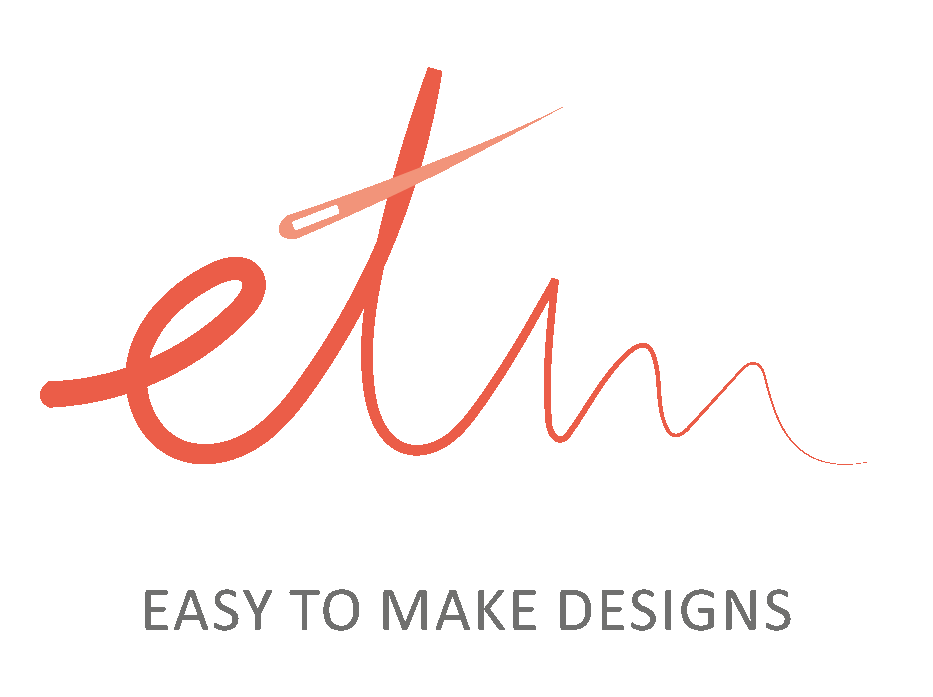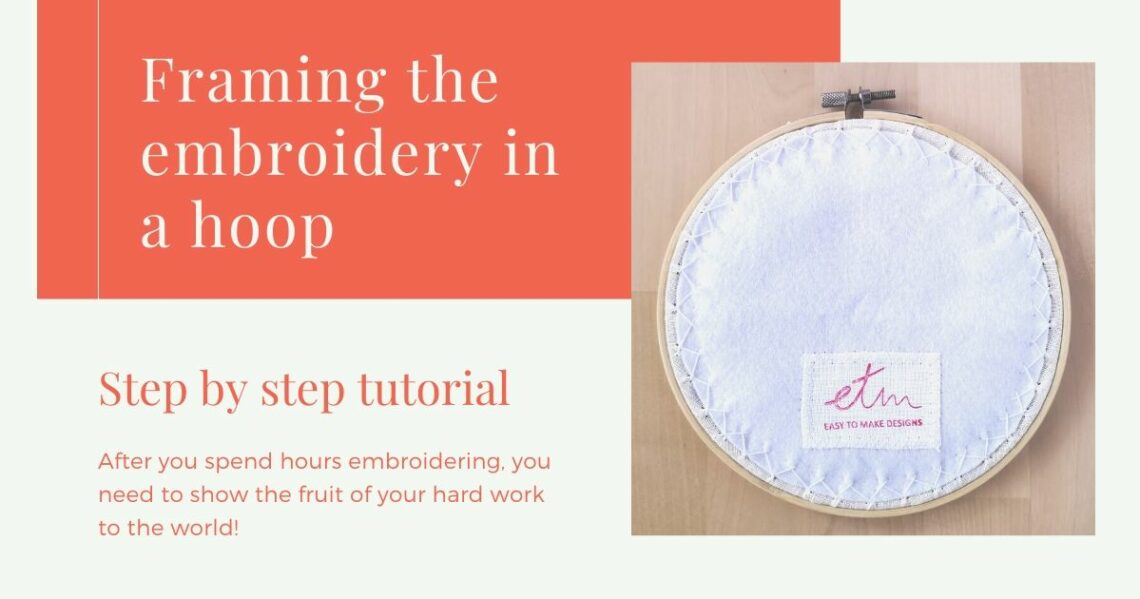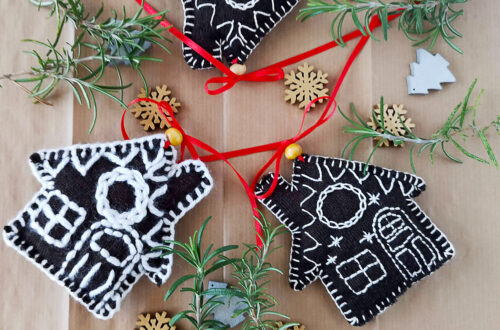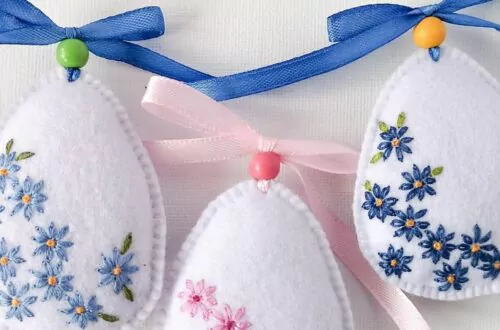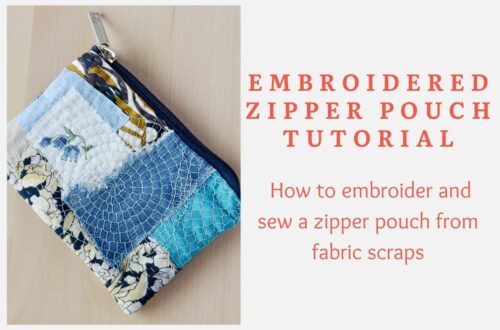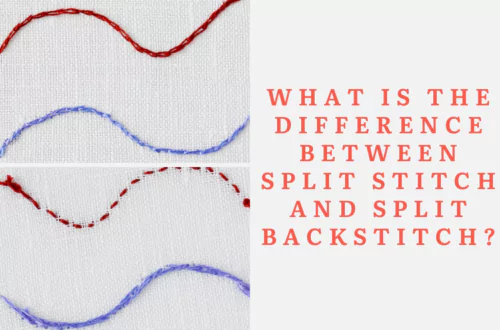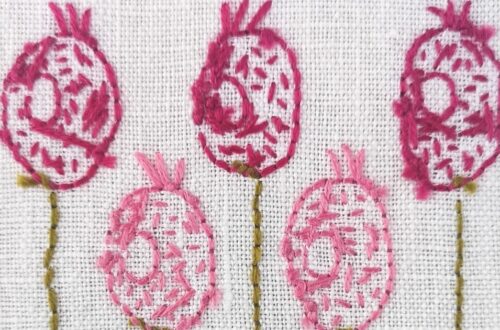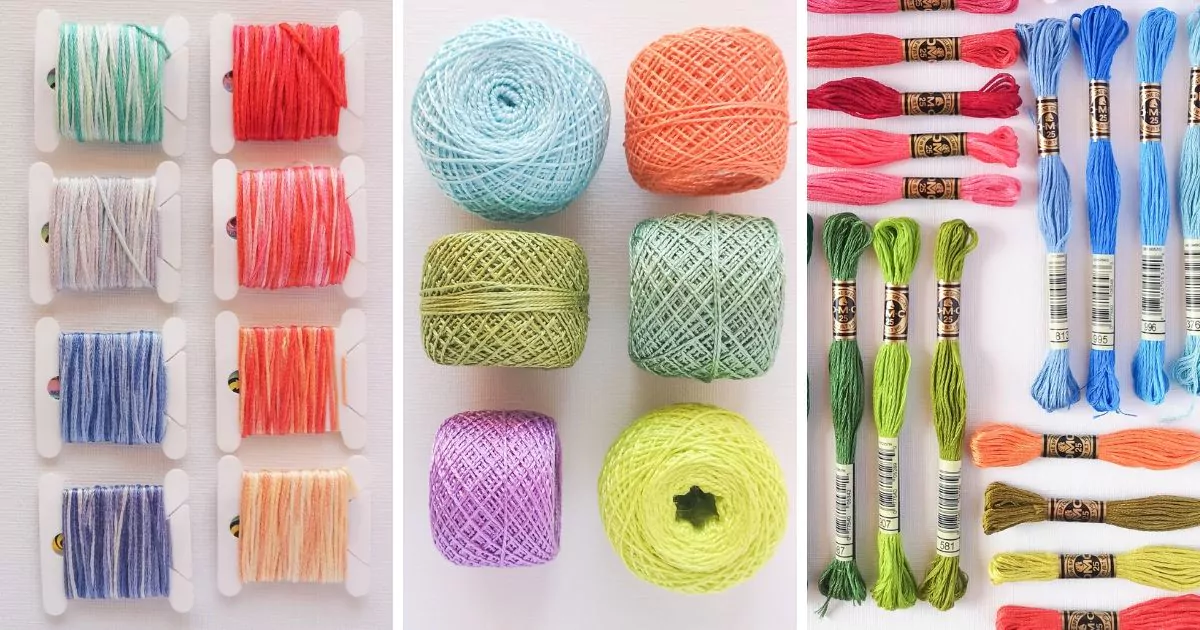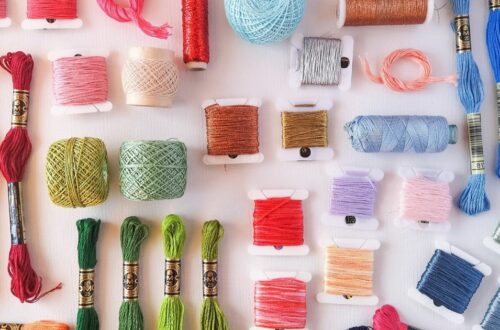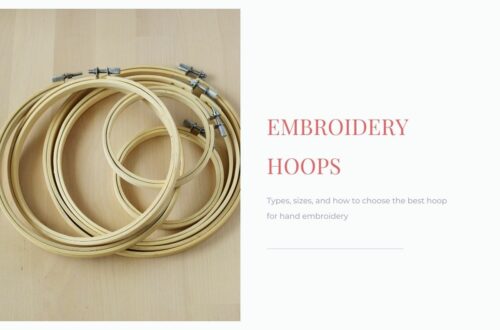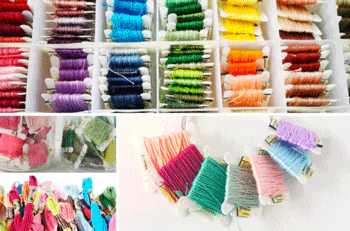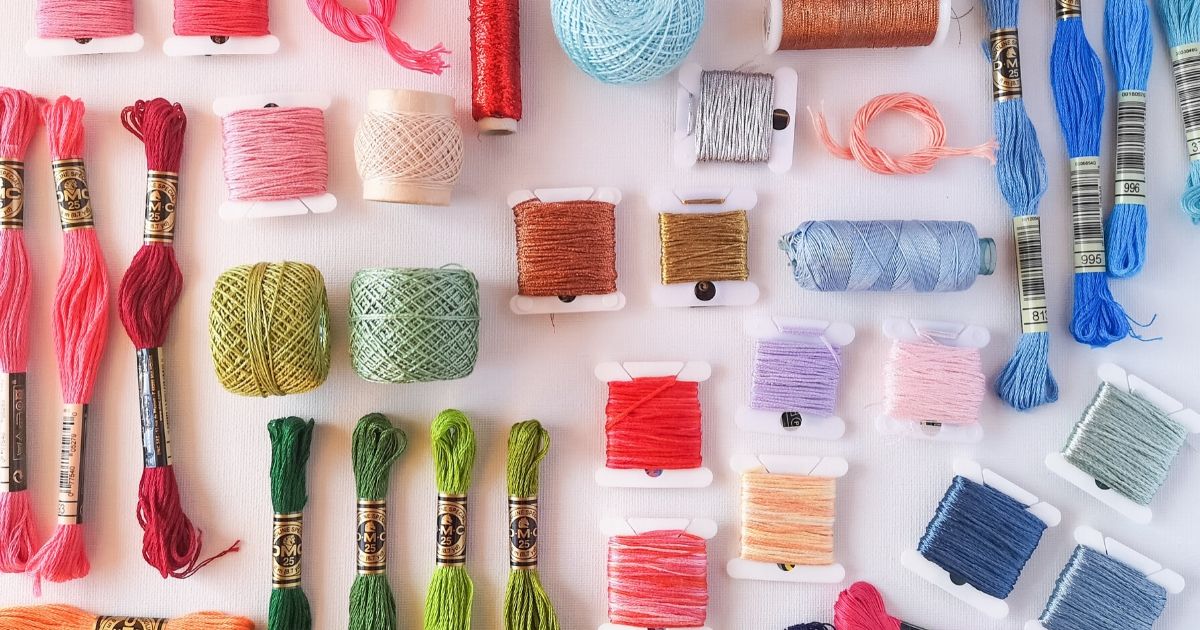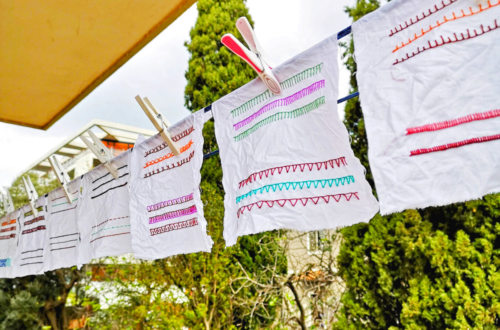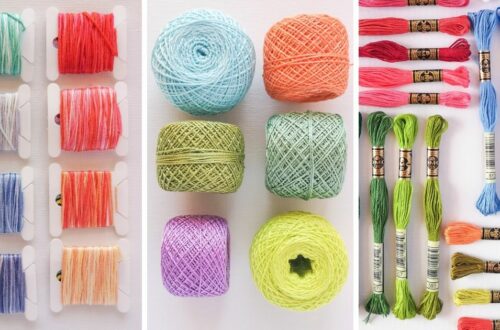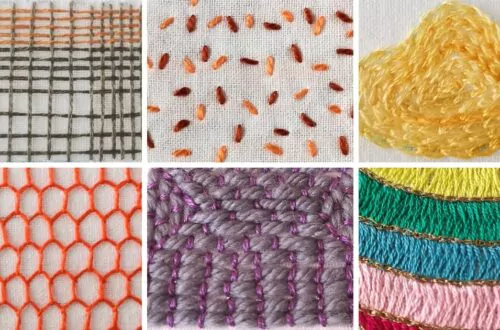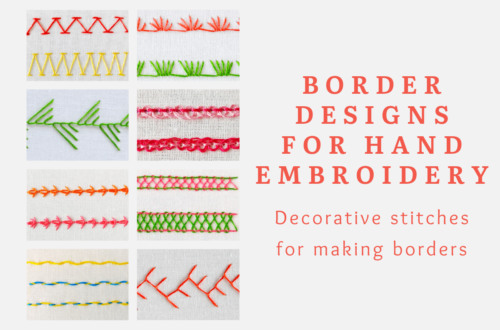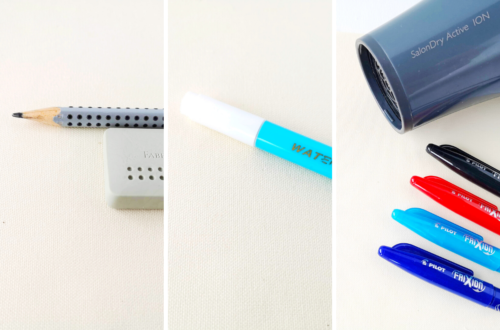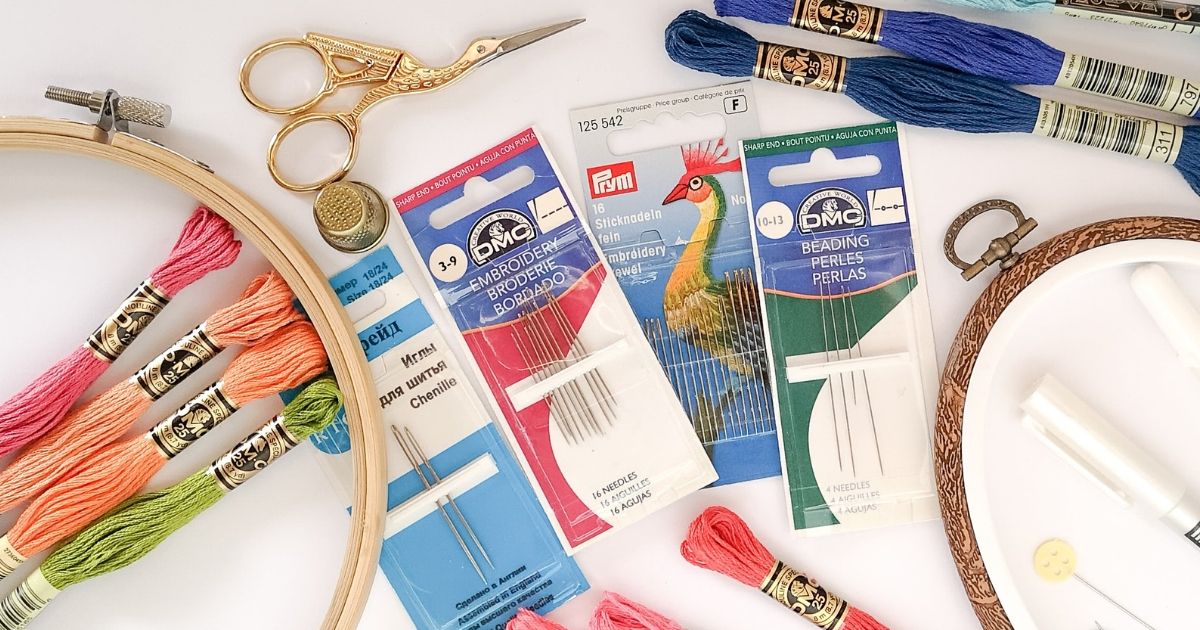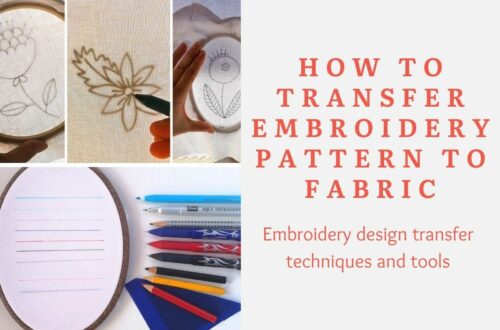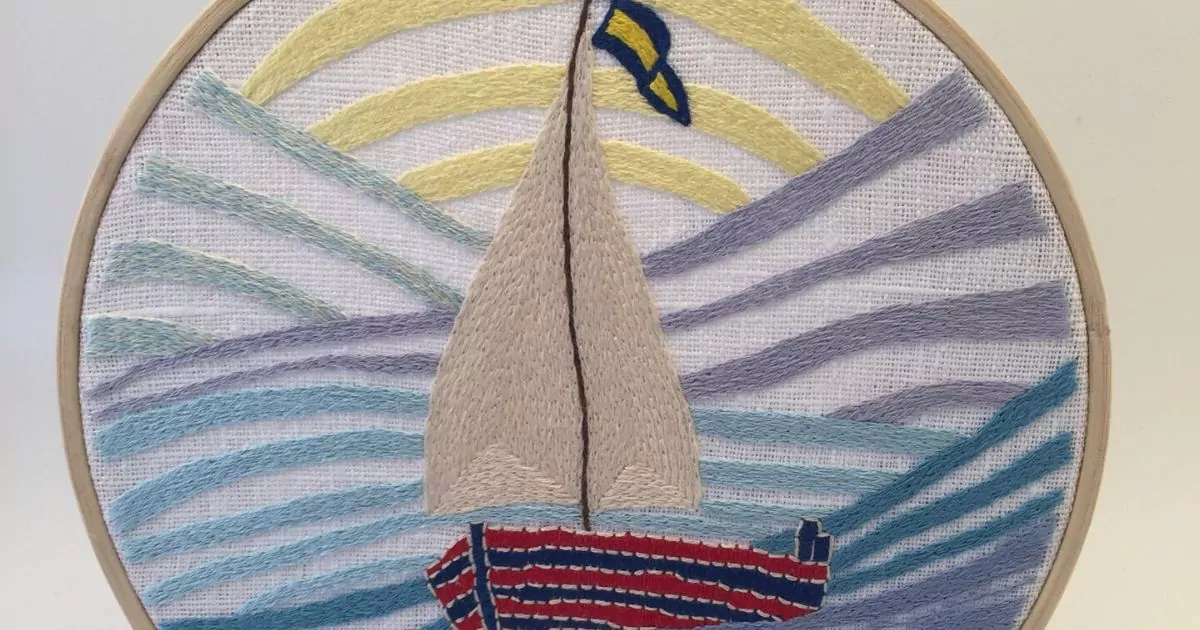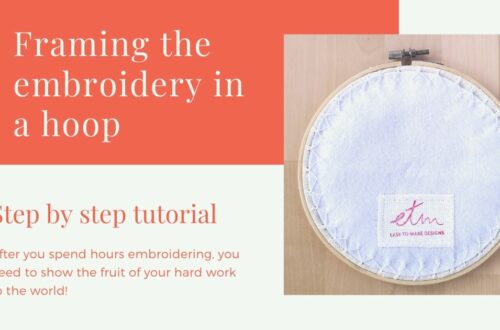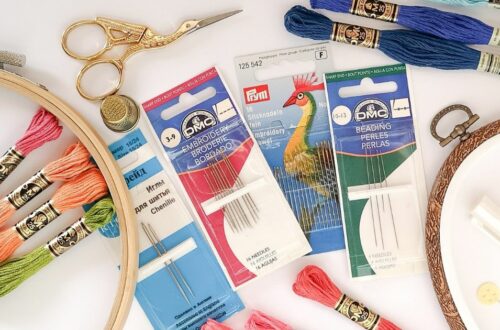Embroidery tips
Tricks, advice, and suggestions to improve your embroidery technique. From choosing the thread to managing the hoop, optimize your work with our secrets.
-
Framing the embroidery in a hoop
After you spend hours embroidering, you need to show the fruit of your hard work to the world! One of the most straightforward ways to frame your embroidered piece and transform it into a piece of art in a frame is framing it in a hoop. After you finish embroidering, wash, air dry, and iron the embroidery. Washing will remove any dust, stains from the hands, and tracing marks. The water-soluble pen marks will dissolve in water, and the heat will erase friction pen marks. Now, frame it. For this project, you will need: Scissors Some pearl cotton or other durable thread Needle, big enough to accommodate a thread you…
-
Hand embroidery Filling stitches 1
Hand embroidery stitches for filling areas Filling stitch is a term for surface stitches that are used to fill in specific parts of a design or the area around an object. Part of the filling stitches will cover the fabric thoroughly, others will show a bit of the background fabric, and some will only put small accents to the surface. Many stitches can be used for filling, including Satin stitch, cross-stitch, french knots, and seed stitch. In 2019 I took a #100dayschallenge (#100daysofstitches) and learned a lot of new stitches. In this post, I would like to share with you some of the filling stitches that I’ve learned and enjoyed the most. I…
-
Types of hand embroidery thread
Cotton mouline, Pearl cotton, Rayon floss, Variegated threads and much more In this article, I would like to write more in detail about different types of hand embroidery threads and where these threads can be used. There are many types of yarns that are created for hand embroidery purposes. Your choice will depend on the fabric you use, the style of the embroidery, and the effect you want to achieve. Let’s see in detail what types of thread there are available and how to select the best thread for your project. Stranded Embroidery Cotton Stranded Embroidery Cotton is also known as Embroidery floss or cotton mouline. It’s a classic go-to…
-
Embroidery threads
All you need to know about hand embroidery threads and floss There are 3 essential groups of hand embroidery tools: the fabric, the thread, and the needle. If you don’t have one of these, you will not be able to do any embroidery at all. Some time ago, I wrote about the needles for hand embroidery. You can find out “Everything you need to know about hand embroidery needles” here. In this article, I will talk about the second group of hand embroidery tools – the threads. When we talk about the thread, I see a lot of embroidery beginners asking the same questions: What is embroidery floss used for? What…
-
Starting and finishing to stitch in hand embroidery secrets revealed
You can see a lot of hand embroidery tutorials on the internet, but how do they start and finish to stitch? Usually, it remains a secret. In hand embroidery, there are many different ways to start stitching and finish the stitch. Your choice will depend on what kind of stitches you will use and if you will cover the area where you start and finish embroidering with stitches later or not. Although almost no one will see your holding stitches, it might be your most important stitch. Make it right and you will be safe in the knowledge that all your hard work is secure. Let’s reveal the secrets of…
-
Everything you need to know about hand embroidery needles
In this article, I cover everything you need to know about hand embroidery needles. For the person who has never embroidered or sewn by hand, it may look like all the needles are the same – just a very fine slender piece of polished metal with a point at one end and a hole or eye for thread at the other. But it’s just a first impression. Different types of needles serve a different purpose. Also, the needles vary in size. Why is it important to know the tools and materials in embroidery? Choosing the right tools will make your hand embroidery experience more pleasant and easy. Some time…
-
9 reasons why you should start embroidering
There are many reasons why people were embroidering for ages and why you should do that too. Hand embroidery is antique way to decorate fabric using a needle and thread. For centuries people used hand embroidery to decorate, mark and mend their clothes, religious objects, household objects, and even shoes. Now, in the 21 st century, hand embroidery is making a come back from traditional to on-trend, as it was said in the article of The Telegraph. Many designers are reinventing the ways to use embroidery in their collections. So, let’s take a look at the list of the reasons why also you should pick up this hobby right away. …
